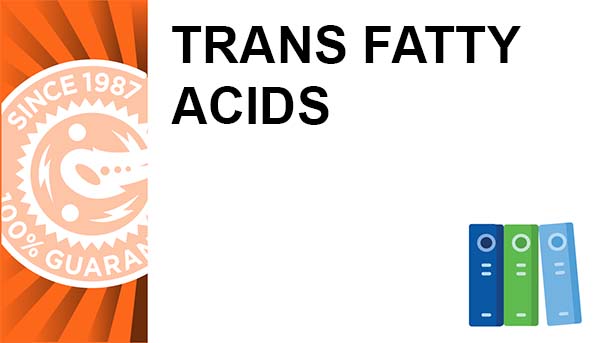Are the stimulators supplied with electrodes?
Yes. When you purchase it, the stimulator includes 4 small electrodes and 2 large electrodes.
How long is the Compex warranty?
2 years (plus 1 additional year by filling in the warranty registration form).
How long do the batteries remain charged?
Battery life varies depending on the programs used and the intensities selected. The average battery life is between 15 and 20 hours.
How do you insert the charger into the Sport Elite / Performance US units?
Remove all cable leads from the device and make sure the power pin is aligned along the bottom curved portion of the port entrance. See diagram for detail.

How many times can the electrodes be used?
Depending on your skin type, between 15 and 30 times. Some 30 applications are possible on skin that is clean, non-greasy and shaved.
Where do I place the electrodes?
The positive electrode (red cable) must be placed in the area of the motor point of the muscle. The negative electrode (black cable) is placed on the muscle trajectory. The position of the electrodes is shown on the photos for each specific application in the training section. The choice of electrode size (large or small) and the correct positioning of the electrodes on the muscular group to be stimulated are determining and essential factors for the comfort and hence the effectiveness of the stimulation. It is recommended to always ensure that the electrodes are placed carefully in the recommended areas.
Which energy level must be reached for the training programs (Strength, Resistance, Endurance)?
The highest level possible (but it must remain bearable) in order to recruit the highest possible number of muscle fibers. The most effective way of deciding on the level is your own judgment: The contractions must be powerful without ever becoming intolerable. The progress of a stimulated muscle will be all the greater if a high number of its fibers are recruited by the Compex device.
There is obviously no need for you to reach the maximum current strength right from the first contraction of the first session of the first cycle. After the warm-up, which must produce very clear muscular twitches, you should raise the stimulation energy progressively, from contraction to contraction, during the first three or four minutes of the work sequence. You should also progress with stimulation energy levels used from session to session, particularly during the first three sessions of a cycle. A normally prepared person will already reach very significant stimulation energies during the fourth session.
Are there any absolute contraindications when it comes to the electrical stimulation of muscles?
Yes. The device must not be used in the case of epilepsy or on patients who wear a pacemaker. In addition, stimulation must never be applied around the stomach area in women who are pregnant, or for people suffering from a hernia or eventration. You must also never apply the electrodes to the head and it is also recommended to avoid the area around the heart.
What is the difference between Compex (EMS) and a TENS unit?
TENS the acronym for Transcutaneous Electrical Nerve Stimulation. A TENS unit is prescribed for both acute pain and chronic pain conditions and sends electrical impulses to certain parts of the body to block pain signals from being transmitted to the brain. It is used at the sensory level and does not cause muscle contraction. Compex (EMS) when used for strength training sends a signal to the motor nerve of the muscle causing it to contract and build muscle mass. The Active Recovery program uses specific low level frequencies to increase blood flow, remove lactic acid, release endorphins and promote muscle relaxation.
How do I find the exact motor point?
The photos of the position of the electrodes show the precise recommended location. To locate your own motor point more accurately, you can move the positive electrode slightly (red cable) and watch where the muscle response is the best (strongest twitch of the same intensity). The motor point pen is an accessory that is sold separately in order to find the motor point.
What position should I be in during electrostimulation sessions?
For programs involving powerful muscular contractions (tetanic contractions), the muscle should always be stimulated in an isometric fashion. To do this, place the ends of the limbs to avoid them moving as much as possible.
Working in this way ensures completely safe stimulation. This also helps to reduce the shortening of the muscle during the contraction, and consequently, reduces the risk of severe cramp which might otherwise occur. Unless indicated otherwise for a particular program, you must not work dynamically without resistance. For the other types of programs (for example, the Pain relief and Recovery, Cramp prevention, Long-run optimization and Overcompensation programs), which do not involve powerful muscular contractions, position yourself as comfortably as possible.
Can the use of excessively high energy levels cause injury?
No. It is not possible to cause injury because the intensity of the electricity is increased progressively during the contraction period to ensure that there is no risk of muscle tears.
Why do I also feel twitches during the rest phases?
The muscle is also stimulated during the rest phases causing muscle twitches. These twitches help to improve recovery between contractions.
Which energy level should be reached during rest phases?
During rest phases, the intensity of the twitches is automatically set to 50% of the level for contractions. The aim of the twitches between the contractions is to increase blood flow to improve the recovery rate.
Is tolerance to the level of electrical intensity the same for everybody?
No. Everyone has their own level of sensitivity that depends in particular on their constitution (fat, conjunctive tissue, etc.)
Are there any long-term risks with electrical stimulation of muscles?
No. Muscular stimulation has existed for decades and no problems have been found.
What is the reason for the pain that can sometimes be felt under the electrodes?
There are certain areas where the skin has a greater number of sensitive nerve endings. A bad connection between the skin and the electrodes reduces the comfort level. You must therefore use the electrodes when they are in good condition (maximum of 30 sessions), apply them correctly to the skin and if necessary move them to a less sensitive area.
Is there any danger from badly-positioned electrodes?
No. There is no danger if the electrodes are badly positioned. The stimulation will simply become less effective.
What are the effects of the Active recovery program?
This program does not cause contractions; it causes muscular twitches. The frequency of the pulse drops gradually duri ng the session, resulting in three types of effect: an increase in blood flow (faster elimination of toxins), an endorphin analgesic effect, a relaxing effect. The end result is faster restoration of the muscular balance.
Has a significant improvement in strength been observed with a Compex device?
Yes. A good example for us to look at is the study carried out on professional basketball players. This study compared the relaxation of a group of players who trained with a Compex device alongside their usual training, and a group that trained only in the traditional manner. The group that trained with a Compex device showed an improvement in explosive strength that clearly exceeded that of the control group (+30?).
Have any studies been carried out demonstrating an improvement in endurance?
A study carried out on cross-country skiing showed an improvement in endurance and strength after training with a Compex device (Leipzig, 1999).
Does Compex electrostimulation also provide endurance training?
Yes. The Endurance program improves the ability of muscle fibers to receive oxygen (develops mitochondria and increases oxidative enzymes) consequently increasing the intensity of the average effort that you can maintain over a long period.
As it is possible to train isolated muscle groups, is there any risk of developing a muscular imbalance?
No, it is in fact possible using Compex to remove any existing imbalance by training specific muscle groups that are weaker. A Compex device helps to improve the muscle chain responsible for a movement, strengthening the weakest link!
Is training with a Compex device also suitable for adolescents or children?
A Compex device is obviously not a toy, and it must not be used by children without adult supervision. Having said that, as it prevents overtaxing the bones and tendons, unlike classic weight training, it can be used to good effect to increase muscle strength in young people without causing lesions.
What does Compex bring to traditional training?
It will enable you to increase your training hours, enhance training quality and improve recovery. Regardless of the type of sport practiced, the level of muscle stimulation of the Compex programs always enhances performance. You can train more, better and in less time: save time, and increase effectiveness and performance.
Can a Compex device simply replace voluntary training in general?
Compex stimulation is a complement to voluntary training. It is obviously essential to continue practicing movements, technique, cardio-vascular development etc. Compex training is a complement to voluntary training to boost overall training performance.
Is it possible to carry out Compex sessions on the same days as voluntary training sessions?
Compex sessions can be carried out outside or during voluntary training. If you wish to do both types of training at the same time, we recommend that you start with voluntary training. In some cases, particularly for resistance work, it can be beneficial to start with a Compex session in order to generate a state of "pre-fatigue" in the muscle fibers.
Why does training with a Compex device not cause trauma?
With a Compex device, the muscle contractions always develop gradually with no sudden pull on the tendons or joints. This means that it is not possible to cause muscle or tendon trauma. However, as the muscle work is intense, muscle soreness is frequent at the start of training, just like when starting muscle training with weights.









